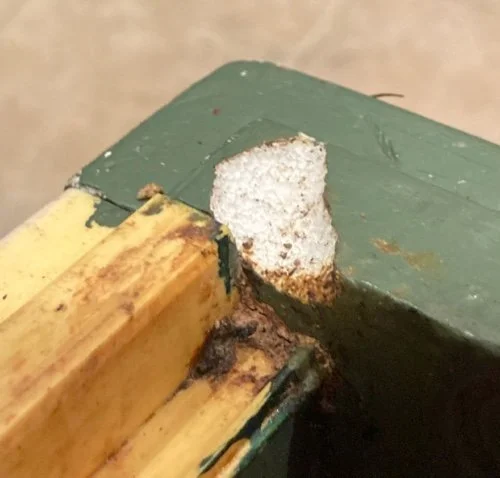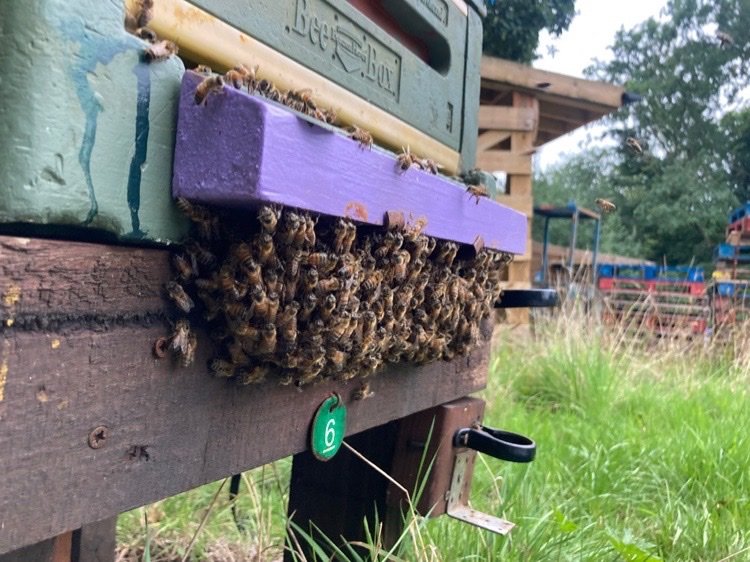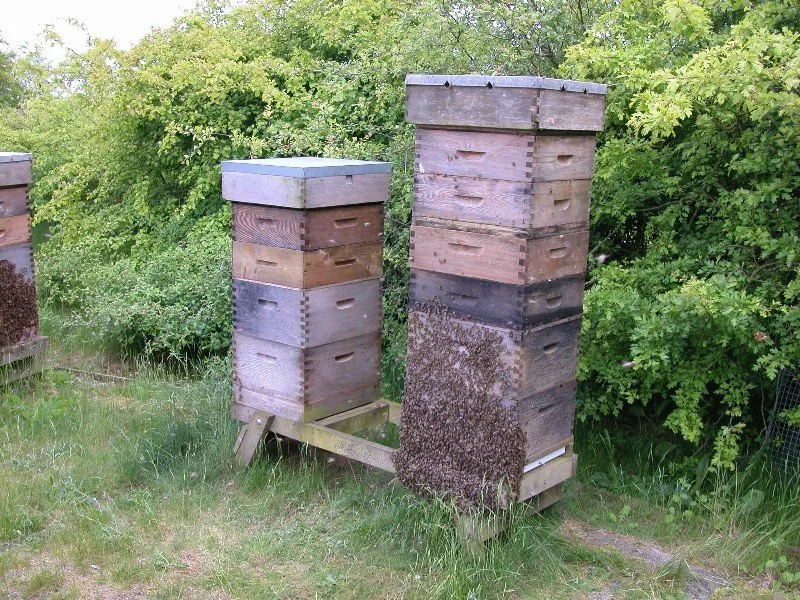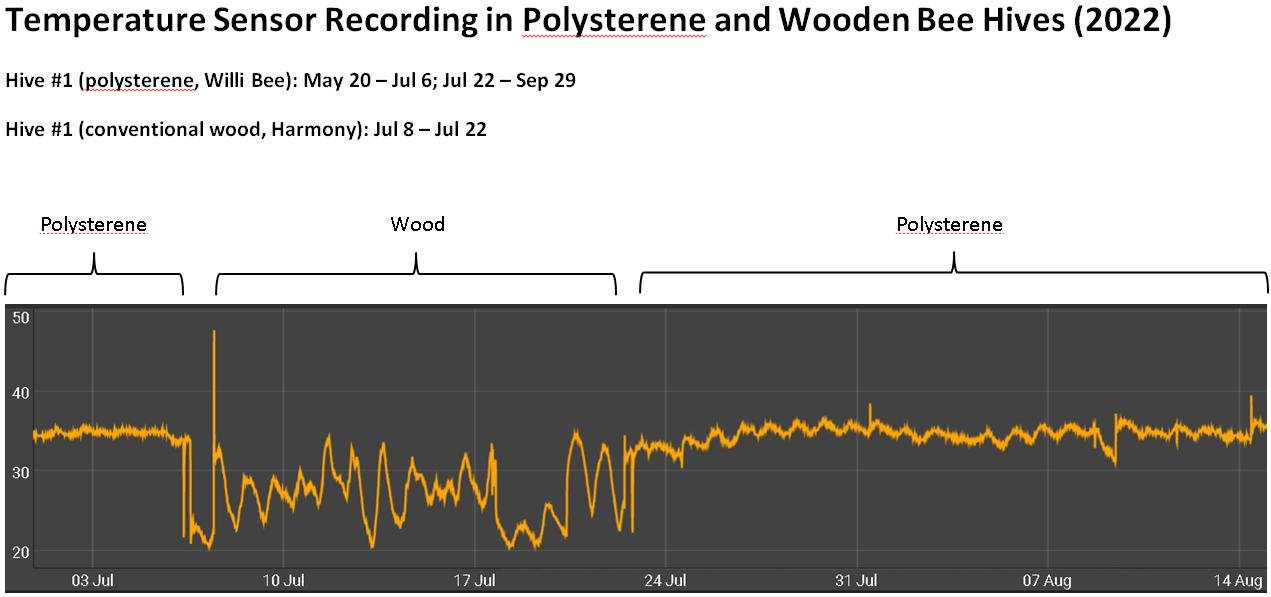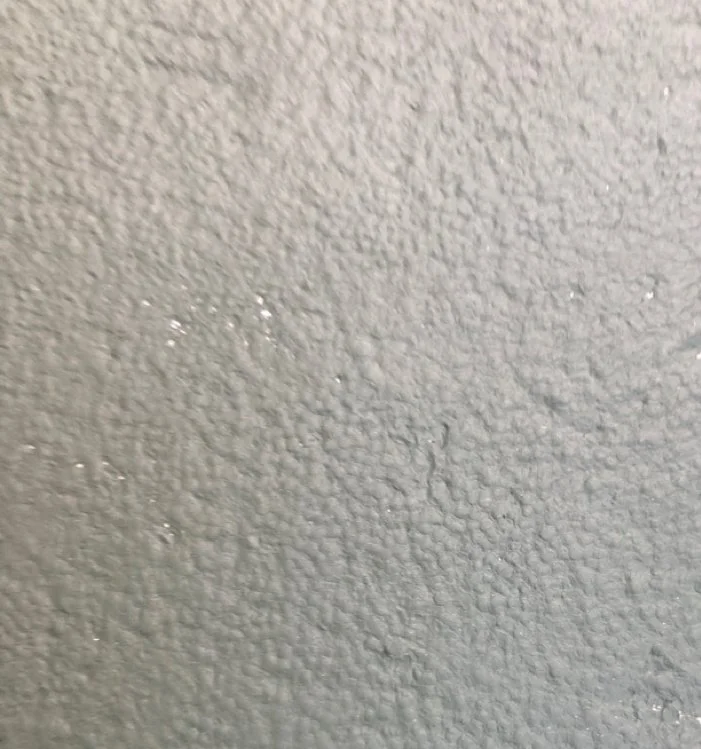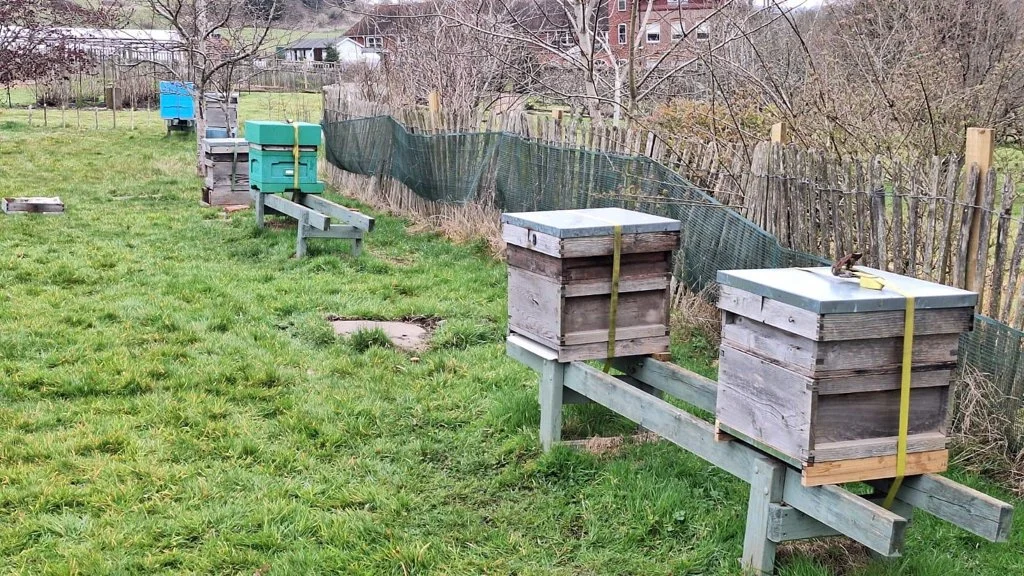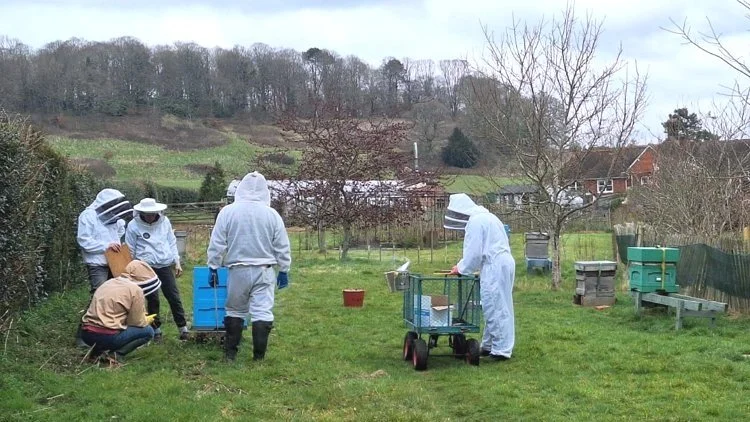
Image: structure of a Polystyrene molecule
The pros and cons of poly hives versus wooden hives
Summary
Features of Wooden hives
Inferior hives are cheap
Cleaning is easy - scrape and flame
Better protection from vermin
Carbon footprint - somewhat lower
Rot and Damp
Some resale value for cedar hives
Deforestation
Require more storage space
Features of Polyhives
Cleaning - soaking takes time
Weight - light
Insulation - good
Storage - outside
Winter losses - few
Polystyrene - derived from oil, nanoparticles
Burning releases unpleasant substances
Durability is similar if they are looked after carefully. However, hives made from Western Cedar are likely to last longer.
Introduction
Whether poly or wooden hives are best is a hot source of contention. The fundamental issue, as I see it, is whether you want to be kind to your bees or kind to our environment.
I’ll attempt to dispassionately distinguish the benefits and disadvantages of wood (W) and Polystyrene (P). I have given them points for being the best in each aspect, totalling 13. Which will win? If you like science, see some research:
Most beekeepers in England use wooden hives, and many argue that wood is good because feral bees live in wooden cavities (bee trees). However, they fudge the issue of the difference in wall thickness (circa 140 mm versus 19 mm).
The inner surface of Polystyrene (PS) is unnatural, but the thermal properties resemble those of a bee tree. However, this comparison is flawed, as any modern hive is wildly unnatural.
It is conceivable that bees prefer any modern hive. They don’t appreciate top ventilation, but never propolise the Open Mesh floor(OMF). I heard an anecdote from someone who placed a bait hive near a bee tree, and the bees chose the hive. Anyway, I’ll compare them, and you can draw your conclusions.
If you know which hive is best, you can read no further; a blinkered horse reaches its destination without distractions. If you were allergic to essay questions at school entitled “compare and contrast” …… do something useful, like kill a pigeon. Pigeons aren’t all bad. They start shredding dandelions in the garden when they have eaten everything else.
-

Top bar
-

WBC or a standard hive enclosed by lifts
-

Poly hive
Physical properties.
Poly (P): rigid, brittle, soft, essentially waterproof, bees nibble.
Wood (W): slightly elastic, dense, porous, crack and rot.
Score: W 0.5 P 0.5
Bees love nibbling PS
2. Weight kg
Figures for wooden National, standard wood except the feeder, which is cedar.
Score: W0 P1
3. Insulation
Some say that “bees just heat the cluster, not the hive”. This defies the second rule of thermodynamics.
The heat flux of an extruded polystyrene (EPS) hive is up to seven times less than that of a standard wooden hive. The absence of top ventilation (in most poly hives) results in more rapid colony growth in the spring, and because bees spend less energy controlling the atmosphere in the hive, they are more productive.
Comparison of heat loss using a mathematical model (same width walls). Based on a diagram on Hiveworld.co.nz
Some beekeepers point out that bees are more active in poly hives. Anecdotally, I heard a beekeeper who uses both hives feel that bees in either hive use the same amount of stores during the winter. Another beekeeper says poly uses less. Issues discussed elsewhere include productivity, bearding, winter isolation, starvation. Studies concerning the consequences of the presence or absence of insulation show some inconsistency. Poly hives provide significantly better stability of temperature and humidity.
When the entrance of a wooden hive is reduced and the varroa board is in place, the colony will be more stressed by Asian hornets, particularly when the colony beards.
Bees clustering under the entrance because I had made a mistake that resulted in reduced ventilation of the hive interior.
Bearding: To prevent the colony overheating in hot weather, bees often leave the hive and gather above the entrance. This is standard behaviour for bees in a wooden hives, but exceptional in insulated hives. © Crown copyright
@Truewood
Score: W0 P1
4. Cost
National hives with two brood boxes and two supers (2023).
Cedar (Caddon) £214
Pine (Paradise) £145
Poly (Paradise) £216
W1 P 0
5. Condensation, Mould, Damp, and Rot
During the winter, convection results in increased air temperature outside the cluster. This is true in both hive types.
Good insulation in poly hives means little heat is conducted through the walls, so less condensation occurs. EPS is essentially waterproof. When condensation occurs (as is apparent when the varroa board is used in the spring), water dribbles down the walls and through the open mesh floor (OMF).
In wooden hives, particularly in the off-season, the cluster has to stay in the middle of the hive to avoid damp walls and their cooling effect. In addition, some beekeepers use top ventilation in order that warm, saturated air passes out before it cools and the water condenses. If condensation arises and wets the cluster, it kills the bees. With increased airflow, the small envelope of warm air surrounding the cluster is continuously replaced with cold air, just like sitting in a draft.
Putting a piece of insulating material (e.g., 50 mm foam) under the crown board considerably reduces dampness in wooden hives.
The cluster stays under the roof in a wooden hive (where the wood is driest).
Score: W0 P1
6. Durability
Cedar hives are better
Hives made of cedar should outlast EPS, with a working life of more than 30 years. But cheaper wooden hives won’t. BeeBoxes get gnawed by bees and are easily damaged if not treated respectfully. Despite this, poly hives should last more than 20 years, with care over 30 years. Someone on a forum wrote that his Beeboxes were still good after 32 years.
Score: W 0.5 P0.5
Crack where a box has been poorly assembled and then nibbled (after eight years).
Deterioration in a four-year-old wooden (not cedar) hive.
7. Cleaning
Wooden hives can be scraped and flamed at the apiary. It is quick and easy. Wood is porous so that bugs can live several millimetres inside; for thorough cleaning, wooden hives are flamed until the surface is brown. Once they are browned, knowing where to flame in subsequent years must be tricky.
Poly hives are brought back to base camp for cleaning, and although they take time to clean, they become pristine.
Score: W 1 P 0
8. Protection against predators and accidents
Placing wire mesh around a hive to afford protection against woodpeckers. © Crown copyright
9. Storage
It is best to store wooden hives undercover to prevent deterioration. Poly hives can be left outside all year round.
Score: W 0 P 1.0
10. Resale value
Western Cedar retains some value and is the most durable. Poly hives can remain pristine if treated with care.
Score: W 0.5 P 0
11. Auxiliary Equipment
Poly hives need big tanks for soaking, but little space to store stuff. Wooden hives require plenty of storage space.
Score: W 0.5 P 0.5
Woodpeckers can drill in to hives, but the holes are easily repaired. It is easy to protect wooden hives with chicken wire.
Poly hives are damaged if they bump into things like wire.
A poly hive is likelier to stay afloat and sail away in a flood!
Wax moth damages poly hives more easily.
Cracks in both hive types need filling to prevent pest access.
If a wooden hive drops off the back of a truck it is likely to disintegrate, whereas a poly hive body (moulded in one piece) is likely to bounce rather than break.
Score: W 1 P 0
12. Carbon footprint, health and environmental issues
Problems with polystyrene production include acidification at the extraction site, loss of oil reserves, and release of a small amount of the blowing agent pentane during manufacture. Pentane causes global warming, although its half-life is four days. At the end of their lives, poly hives go to landfill – but that is changing. The carbon footprint per poly hive that weighs 9 Kg. is 1.45 Kg/yr – the same as a litre of cow’s milk. Poly hives are mostly gas.
Plastics form nanoparticles and PS is no exception. Ten percent of the particles we ingest pass into our body, lodge in our body tissues, cause inflammation and sooner or later will cause disease. Plastic never degrades. It persists for two billion years, until the sun destroys the earth.
There problems with Western cedar. Deforestation, habitat destruction. The wood for one hive does not have an impact, but it does if everyone has the same idea. Sustainable deforestation should imply that regeneration equals extraction. Is man capable of felling one mature Western cedar out of 600 annually? You bet! Only large trees survive fires. British Columbia’s climate is drying, making trees stressed. See the rate of deforestation in British Caledonia here. The CO2 footprint of transporting wood for a hive to the UK is about 0.26 Kg/yr, less than half a litre of oat milk.
The inner wall of a Beebox hive that had been left unpainted. The dimpling is caused by bees nibbling the surface.
These estimates seem low to me. Neither includes the impact of manufacture, distribution and the carbon dioxide released if they rot or burn.
Global warming: Carbon dioxide in the atmosphere will persist for millennia, and global warming will continue until the heat emitted from the earth matches the input. Don't be fooled that warming stops when we reach net-zero. Unless we sequester CO2 or have a nuclear war, we are going to fry.
In the greater scheme of things, the ecological impact of a beehive is minimal. You would do better to abstain from flying on holiday: (3.5 tonnes CO2 to Hong Kong and back) or have a meat-free January Beef 24Kg CO2/Kg (plus deforestation in the case of corned beef in the UK).
Poly hives vendors claim that they are made of food grade polystyrene. Okay polystyrene comes in many forms. I'd like to know if some forms of expanded poystyrene aren't food grade. Any form of polystyrene degrades to nano-plastics.
Score: W 0 P 0
13. Destruction in the event of Foulbrood
Burning polystyrene gives off unpleasant smoke
Score: W 1 P 0
14. Recycling
Wood -– no
Polystyrene is readily transformed into pellets that can be converted to make other plastics. In Germany, where the polluter pays, much recycling occurs. Transport expenses are high because it has such a low density. This can be overcome by compaction or by putting it in to solution. Some councils have started recycling. Presumably, they are fined for sending it to landfill.
If burnt at 1000 degrees C. P produces as much heat as natural gas. Unfortunately most municipal incinerators do not reach such high temperatures.
There are a number of energy-intensive methods that convert PS to useful chemicals. Using microwaves reduces energy requirements and converts it into fuel oil.
Microplastics are produced by plastic. Microplastics are present in some honey.
Score: W1 P 0
15. Winter performance
Losses are rare when using poly hives. It could be the hives are better or maybe the beekeepers are more proficient. Overall England winter losses are 10 to 50%. Whilst colonies in poly hives build up faster in the spring, colonies in wooden hives, soon catch up.
Score: W0 P0.5
Wooden National hives in the foreground on “a brood box and a half”. This means a brood and super. Flat roofs make damp inevitable whereas gabled roofs, although less convenient, do better.
Feeding colonies at my Association apiary. Adequate winter preparation renders subsequent feeding unnecessary.
Totals:
Wooden hives 7 Poly hives 6
I know this formulation is contrived, simplistic and flawed. Different features will be more pertinent to some people than others. I hope I’ve made you think. Both sorts of hives have advantages. You may find that one feature over-rules all the other aspects, like appearance or the ability to store hive parts outside all year round or ease of cleaning.
You may be interested to read:
Bamboo hives — Bees for Development
Cedar is the new Ivory — Smithsonian Institute.
List which woods are alternatives (pdf) to those from endangered forests (rainforest relief). Eastern cedar is preferable to Western cedar.
What is the impact of producing EPS — very detailed audit — Plastic Europe
Next: The environmental effects of beekeeping
Credit - Header -– Ben Mills — structure of a polystyrene molecule
H6.
